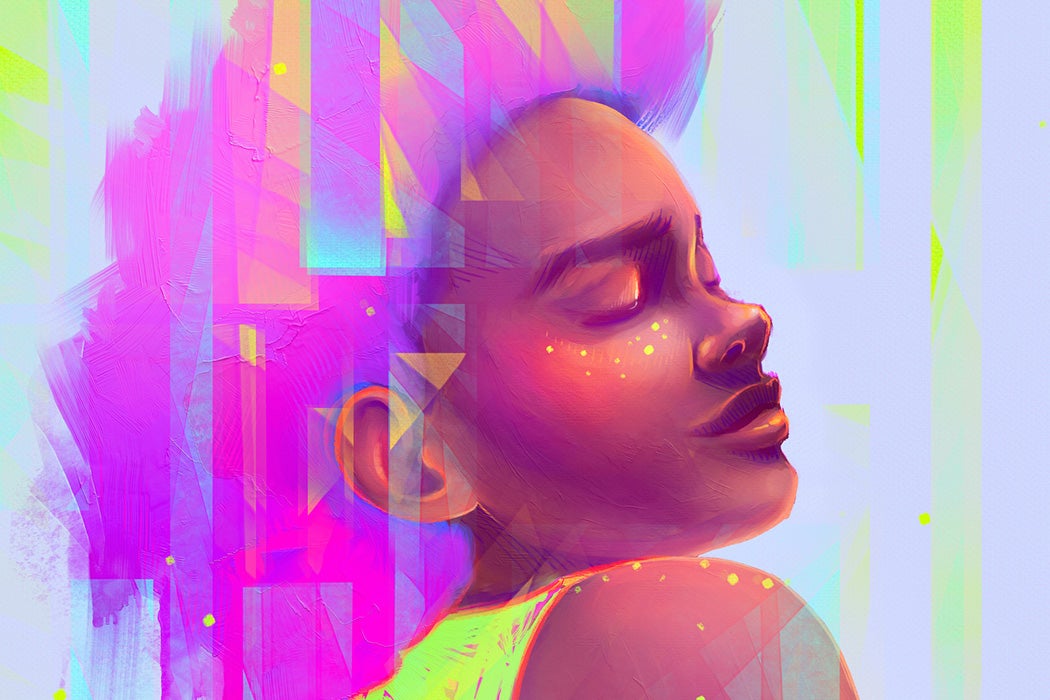With growing pressure to act in the face of the anthropogenic climate crisis, notions of time and urgency have gained renewed importance. Possible solutions have been posed as a race against a ticking clock, seen in the efforts to meet the 1.5°C target or to get all countries to net zero by 2050, which has incentivized swift decision-making that supports the meeting of deadlines and targets with little regard for those who may be harmed by business-as-usual.
The Intergovernmental Panel on Climate Change has created models of potential future pathways that all presuppose the existence of the neoliberal economic system, further solidifying images of the future that suit current dominant political interests. As Susie O’Brien and Cheryl Lousley highlight, these futures have histories, and the study of them often is defined by who gets to imagine and occupy the climate future. Yet, futurity scholarship from marginalized communities, particularly Afrofuturism, can unsettle what it means to negotiate life, innovation, growth, and progress in a technology- and material-intensive world.
Afrofuturism has been widely and variably defined across scholarship; it’s been named as an ambition, a practice, a fluid theory, a trendsetting aesthetic, and a dream. Afrofuturist thinking and practice explore futures where white supremacy holds no power, fashioning worlds based on the possibilities of joy, healing, liberation, invention, and freedom for Black people across the diaspora. These futurisms don’t seek to eliminate white people, but they instead seek to dismantle the power structures that reinforce whiteness as supreme and Blackness as inferior.
Afrofuturism draws upon histories often unrecognized or unknown, though plausible, to unpack—in the words of scholar Dewitt Douglas Kilgore—“assumptions about what histories matter and how they may serve as a precondition for any future we may imagine.” Afrofuturism centers the art of collective memory and archival practice as deeply socio-political and contextual; these contingent histories often form chains of reality that prevent the creation of worlds outside the logical confines of colonialism, capitalism, and racism. As Afrofuturist practitioners Wendy W. Walters and Gisele L. Anatol, as summarized by Jess Schwartz and Belinda Wallace, Afrofuturism supports the “innovative engagement with the past… [which is critical to] charting new paths toward a more humane future.” While Afrofuturist thought is generally anchored in the political and social context of the United States, there has been generous engagement and dialogue about resonances with Afrofuturism around the world.
Afrofuturists have used science fiction, literature, cinema, music, digital technologies, and visual art to position Afro-centered ways of thinking and being to confront oppression rooted in global anti-Blackness. For instance, it’s well documented that Malcolm X engaged with Afrofuturist traditions to fantasize about engineered solutions to Black oppression, such as building up Black-owned businesses for innovation. But this early Afrofuturism wasn’t just limited to engineering—musician Sun Ra (1914–1993) noted that his electronic jazz sound was an Afrofuturist-oriented aesthetic meant to transport listeners into a healing, emotional experience across time. Octavia Butler (1947–2006), an Afrofuturist writer-activist, in her fictional Lilith’s Brood trilogy, brought worlds to life where leaders were Black, gender-fluid, and multi-generational, using their experiences to govern sustainably with attunement, specificity, and complexity. More recently, scholar and writer adrienne maree brown has drawn upon Butler’s scholarship in her book Emergent Strategy to develop modes of social justice organizing and collective governance that rely on biomimicry to right relations. Scholar Sofia Samatar highlights the role of Afrofuturist storytelling through literature and music as not only a medium for the preservation and transfer of memory [that occurs across time scales]; it is also a metaphor for the process.” Rather than considering time on a linear scale, Afrofuturist artists understand it as a deep entanglement of multiple pasts, presents, and futures opening the door for possibilities of different kinds of stories, relations, politics, and technologies.
Weekly Newsletter
As we struggle with narratives from the Anthropocene, we must not resort to climate doomism or the idea that catastrophic anthropogenic climate change is unavoidable and inevitable. Futurity scholarship, particularly Afrofuturism, puts “crises” into perspective: drawing upon the world-ending events that Black people have survived since the colonization of the Americas, particularly transatlantic slavery and the Jim Crow era in the US, to build futures of liberation. The Afrofuturist tradition is as old as Black subjugation itself. In dreaming of and mobilizing a free world, David Walker’s Appeal serves as one of the oldest recognized texts in this realm of scholarship. Afrofuturism challenges the perceived impossibility of survivance and resilience at the “end of the world.” As independent scholar, poet, and historian Alexis Pauline Gumbs notes in her 2018 book, M Archive, Black perspectives and practices have long served as a mirror to society, a last line of defense against the end times: coming to teach humanity “something else for goodness sake.” Perhaps this time, we’ll listen.







